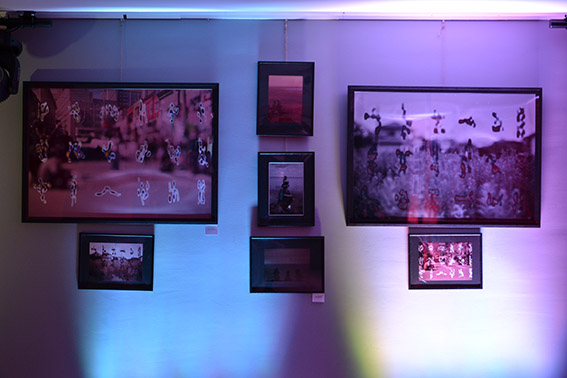

Seitaro Yamazaki Newsletter October 07, 2024
I have some exhibition announcements in Europe for this fall.
This is an ongoing exhibition that began September 26.
There is a contemporary art event called Warsaw Gallery Weekend, which is held every year in Warsaw. The most famous ones are held in Berlin and London, but they are also held in Paris, Barcelona, Munich, Stockholm, and many other places. It is like Tokyo Art Week.
The Warsaw Gallery Weekend is associated with “Frinzi Warsaw,” a group of exhibitions and events organized by curators and artists who do not have a fixed gallery. This year, there are 82 projects taking place.
My work is shown in a group exhibition called “Czym wypełnić puste pomniki?” curated by Barbara Russa. The English translation is “What to Fill Empty Monuments with?”.
I am sharing two of my works from “The Voice within the Voice”.
The exhibition will be held until October 13.
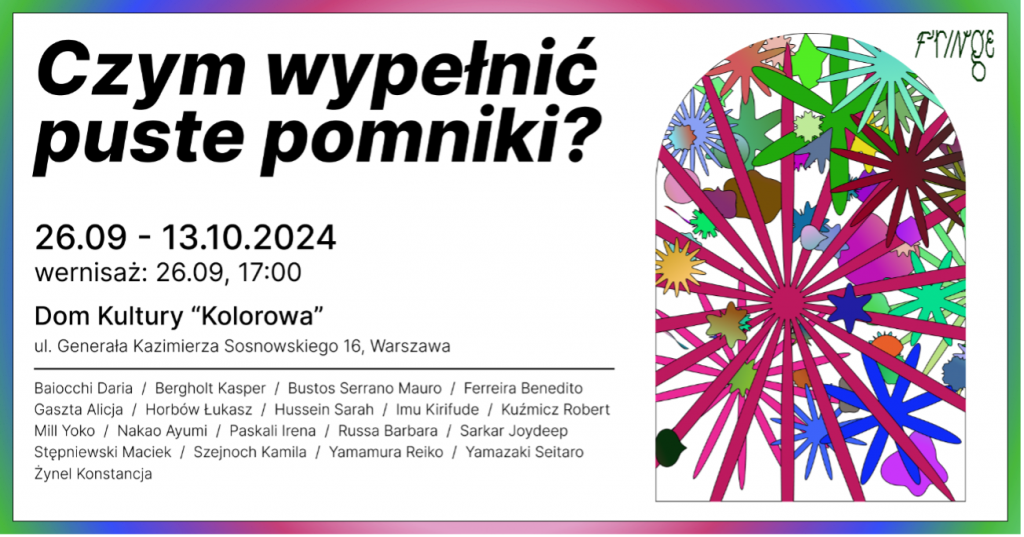
I will have a solo exhibition at Hosek Contemporary in Mitte, Berlin from November 5 through 17. Please join me at reception on November 5th from 18:00.
The title of this exhibition is “Contour of Yohaku”. It means something like “Contour of Margin”.
I personally have a strong interest in the concept of yohaku, or empty spaces. The title of my business book published in January is called “Yohaku Thinking,” and many of the artworks I have exhibited so far have incorporated yohaku as an element. In my previous solo exhibition in Roseville, California, titled “Time Spilled Over,” I focused on the theme of time that seems to spill over from our perception of time.
I wrote the following text in the exhibition proposal.
–
Yohaku, meaning blank space, is defined as a traditional Japanese form of beauty.
It has been used in Japanese painting and performing arts (Noh theater) since 14th century. It is a technique in which bold omissions allow the viewer to imagine far more than what is omitted. For example, in Ukiyoe paintings by Utagawa Hiroshige, tree branches are often depicted hanging from the top of the picture, and the viewer is encouraged to imagine a space extending beyond the picture. In Hasegawa Tohaku’s “Pine Trees,” there are many empty spaces between the pine tree. By daring to leave nothing painted, Tohaku is trying to create the impression of a vast space in the back of the painting. These techniques were also adopted by Impressionist painters such as Claude Monet.
This technique of expression is now called yohaku in Japan, and yohaku creates a unique beauty with ambiguity and fragility. The Japanese did not even have a name for this aesthetic until they encountered Western art in 19th century, because they were unaware that their own aesthetic was far different from that of the West. Yohaku was originally conceived as a translation of the Western typographic term “margin”, but it is now used as an art term.
Indeed, yohaku superficially resembles the vast margins of Swiss-style typography. However, typographic margins are different aesthetic than the Japanese yohaku, since typographic margins are a technique for guiding eyes to the letters.
I am attempting to extend this concept of yohaku to society through my art. A society before everything was verbalized and ambiguities remained. The sociological function and its beauty.
–
I had made a 30-meter-long hanging scroll of “8 million traces,” and installed it in the forest for a photo shoot. We had first planned on shooting it in the summer but after several typhoon reschedules, we were finally able to shoot it last month.
The filming took place at Shiroyama Park in Inagi City, on the outskirts of Tama New Town. This park has been used for various filming locations, and the place where I shot was used in the film “Hana to Alice” directed by Shunji Iwai.
I would like to thank the Inagi City Tourism Department and the Inagi City Tourism Association for their cooperation.

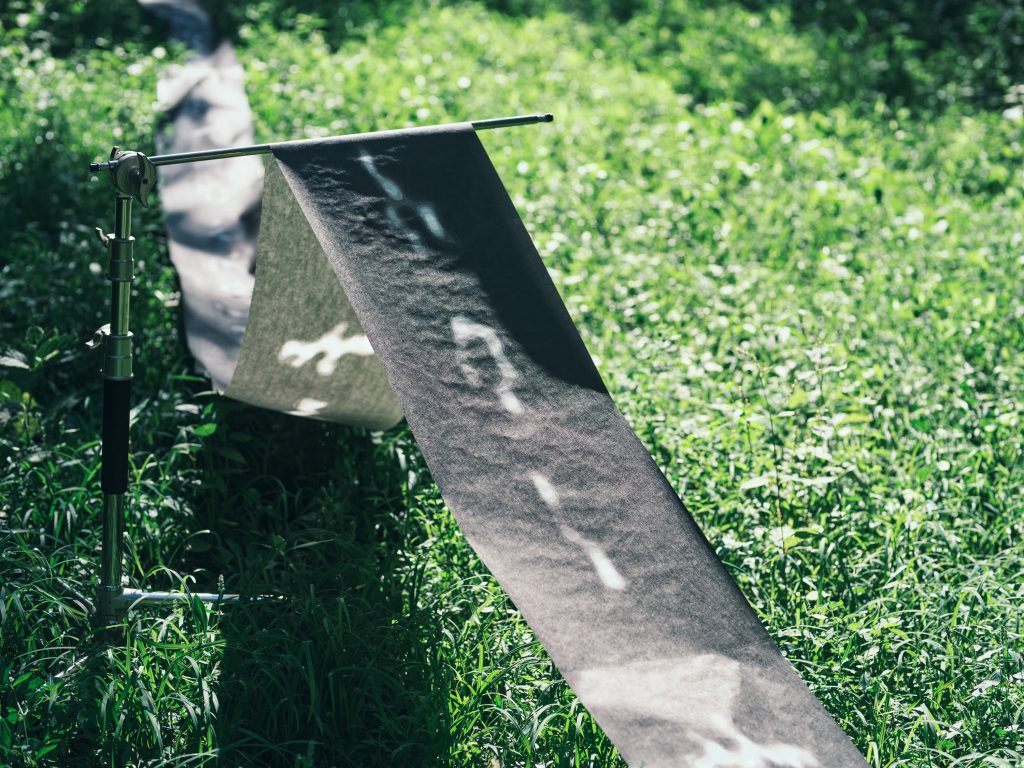
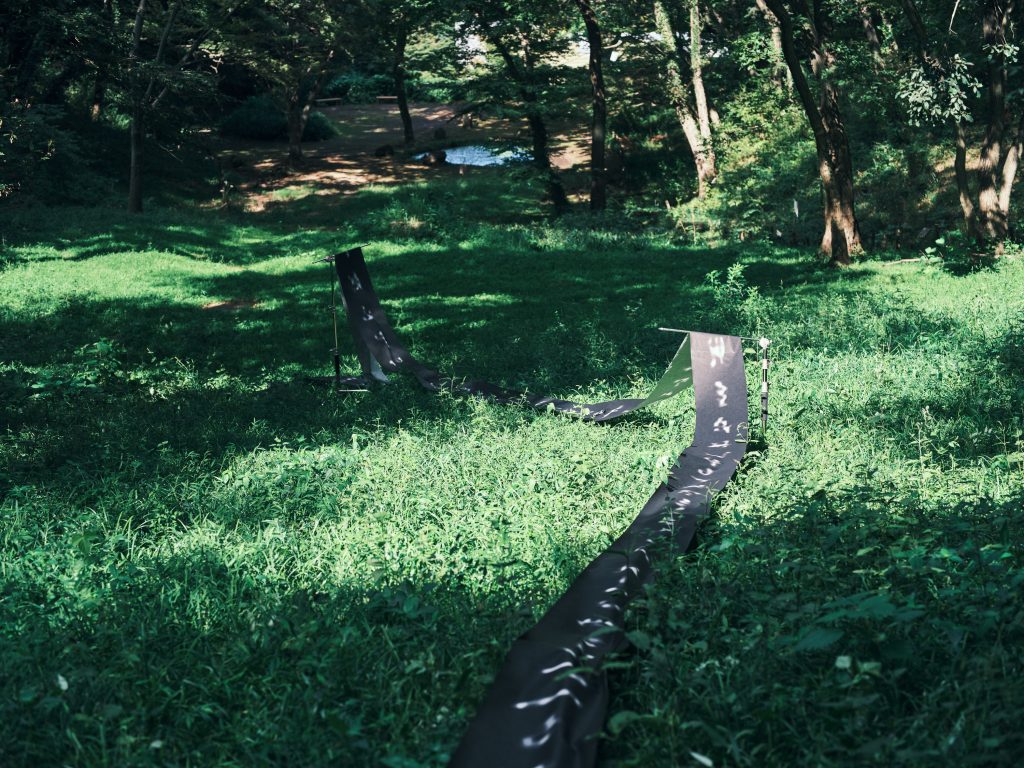
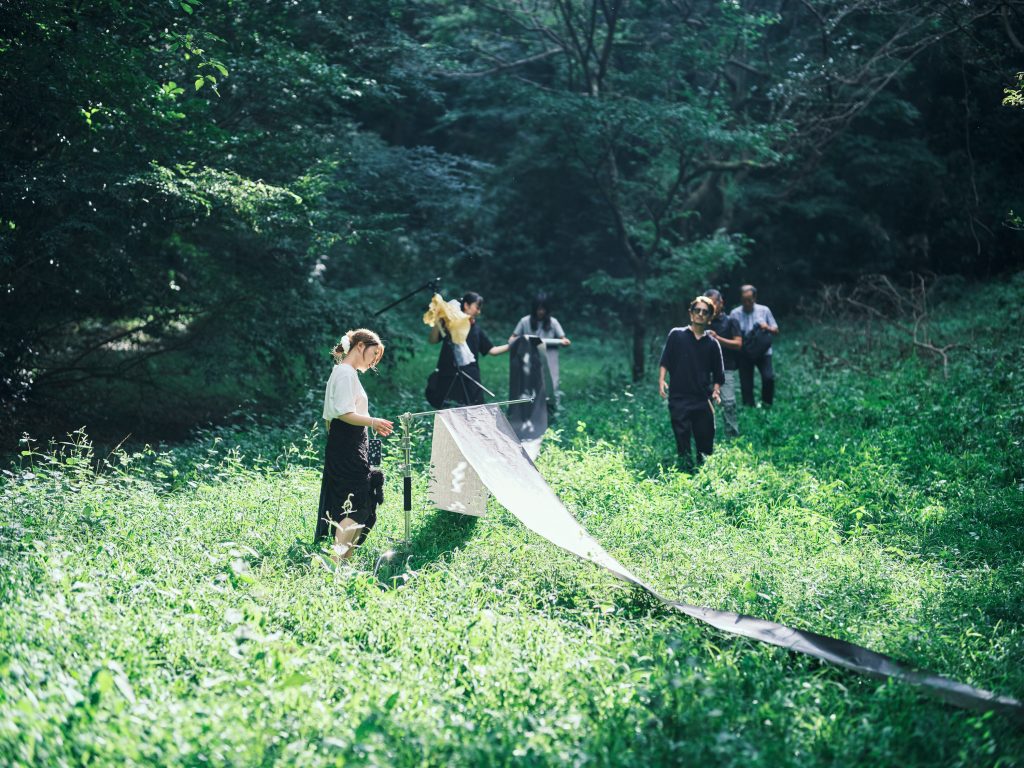
LETTER FOR YOU
To receive news on upcoming exhibitions and artworks.
Please subscribe to our newsletter.